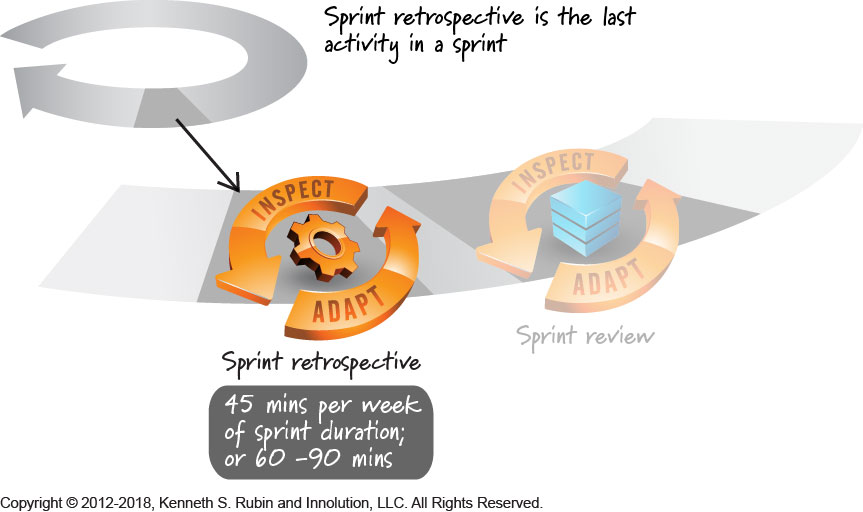This is the sixth blog post in the “How Much Time Should Each Scrum Practice and Meeting Take” series. This posting focuses on the sprint retrospective.
The purpose of the sprint retrospective is to inspect and adapt the Scrum team’s process. During retrospectives, teams are free to examine what’s happening, analyze the way they work, identify ways to improve, and make plans to implement these improvements. Anything that affects how the team creates the product is open to scrutiny and discussion, including processes, practices, communication, environment, artifacts, tools, and so on.

How much time teams should budget for the sprint retrospective meeting
The exact length of the sprint retrospective is influenced by factors such as how many people are on the team, how new the team is, whether any team members are located remotely, and so on. In my experience, teams new to Scrum have a tendency to budget too little time for their retrospectives.
I have seen two different rules successfully applied by the teams I have worked with.
The first rule is that the sprint retrospective should take no more than 45 minutes per week of sprint duration. The following table illustrates this rule.

Personally, I think it is difficult to do a really good retrospective in less than 60 minutes, so even for a one-week sprint, I would think 45 minutes might be too short.
That’s why I tend to prefer the second rule. The second rule is that the sprint retrospective should take between 60 to 90 minutes for a two-week sprint and likely a bit longer (however, probably not proportionally longer) when doing longer sprints.
If you want to read more about the sprint retrospective, please have a look at Chapter 22 the Essential Scrum book.
The previous post in this series is: “How Long Should the Sprint Review Last?”
The next post in this series is: “How Much Time Should Teams Spend on Sprint Execution?”